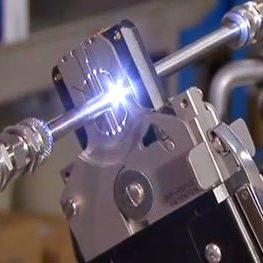Orbital Welding
Orbital welding is a particularly specialized area of welding whereby the arc is rotated mechanically through 360° around a static workpiece, (around an object such as a pipe), in a continuous process. It is very difficult to achieve the highest standards of quality and safety using manual welding, because certain welding positions, overhead and down-hand welds for example, often lead to faulty welds due to restricted access and freedom of movement. In order to have complete control over the weld pool, a perfect balance must be maintained between gravitational force and surface tension at every position of the torch. With mechanized variants of the technique, certain parts of the welding process are handled by mechanical components, with a welder monitoring and controlling the process. In an ideal situation, all welding parameters would be fully programmed before welding is started. In practice, however, the presence of variable constraints means that it is often necessary for the welder to make corrective interventions. With automated welding, the computer-controlled welding process runs completely independently, without the need for any intervention from the operator. Its application is used in the construction of pipe work and equipment for diverse industries like food processing, pharmaceuticals, chemical engineering, automotive engineering, biotechnology, shipbuilding, and aerospace. Automated orbital TIG welding is also used in the construction of power stations, (thermal power plants).

